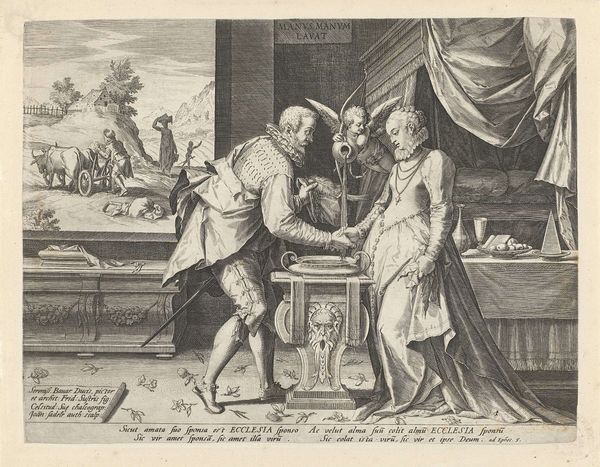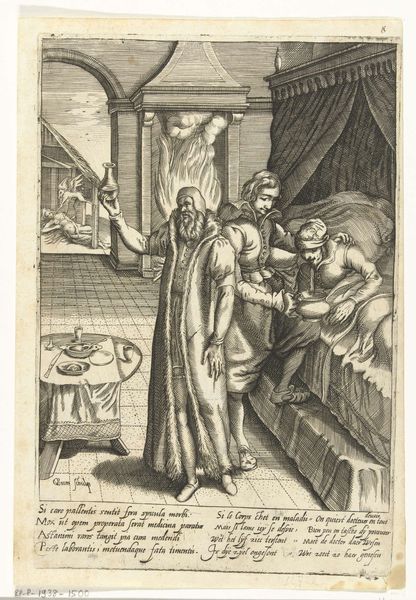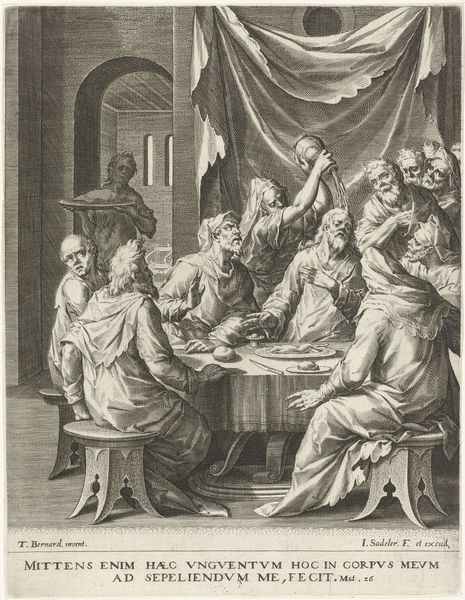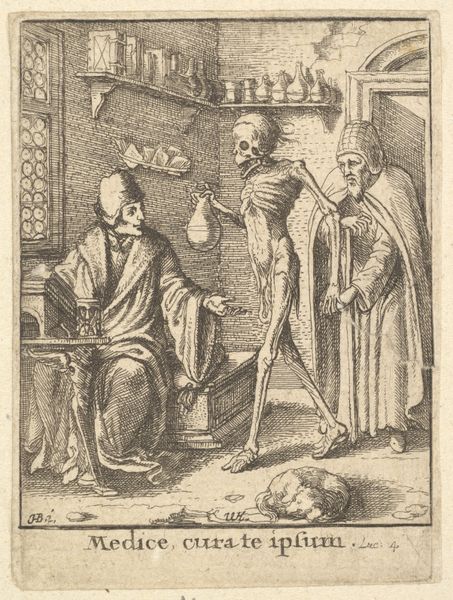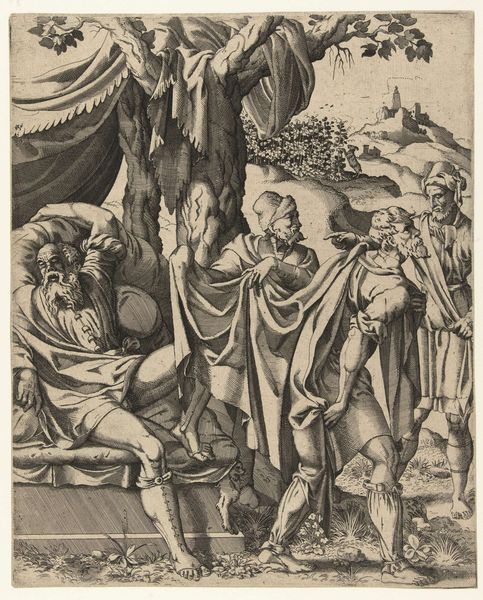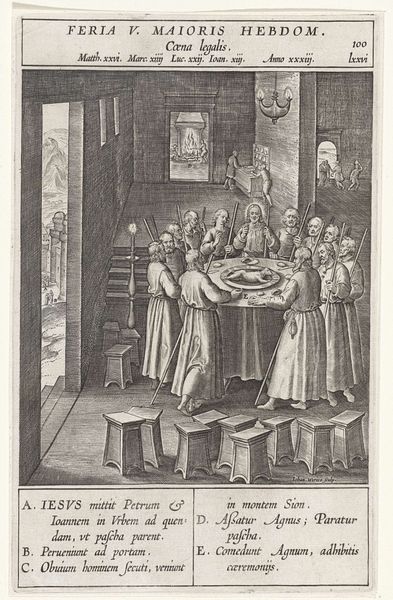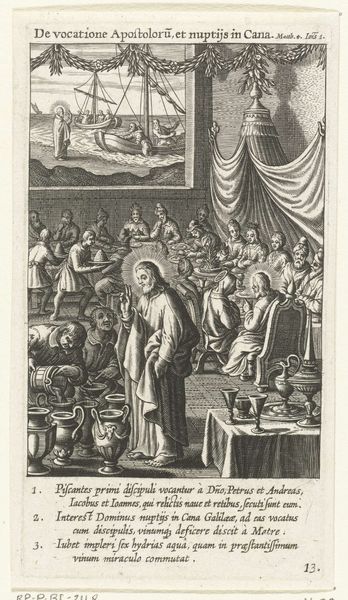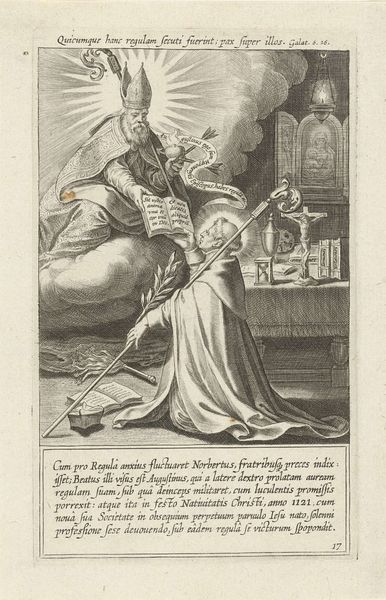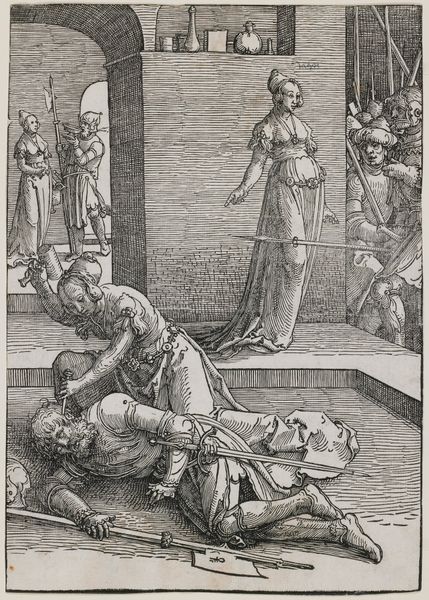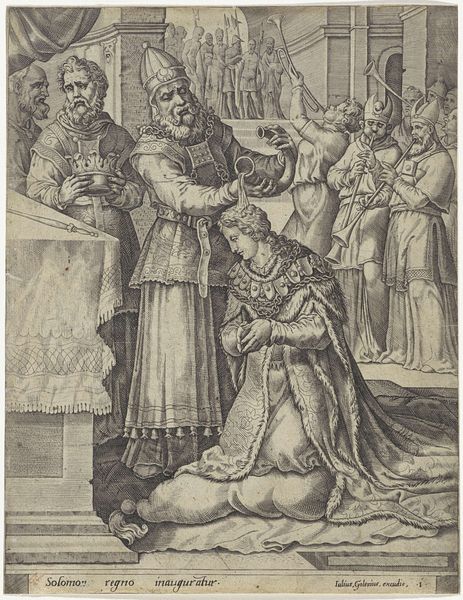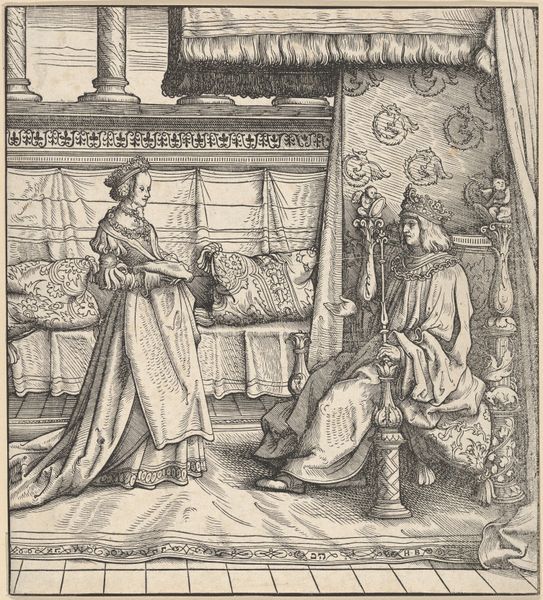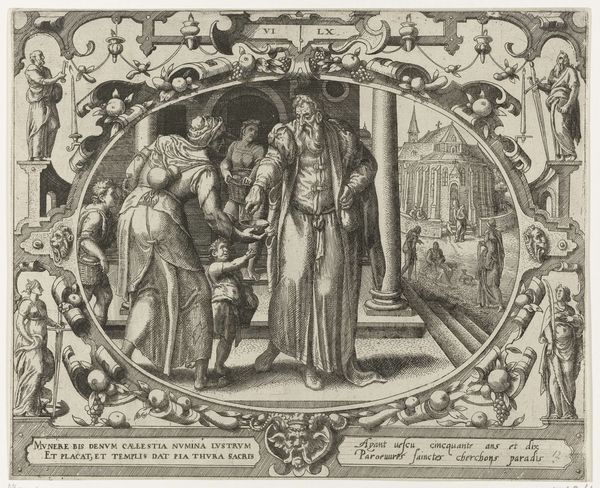
print, engraving
#
allegory
#
baroque
# print
#
old engraving style
#
figuration
#
line
#
history-painting
#
engraving
#
realism
Dimensions: height 225 mm, width 156 mm
Copyright: Rijks Museum: Open Domain
Curator: This engraving, attributed to Philips Galle, and dating roughly between 1610 and 1676, is titled "Alleen een ziek lichaam wordt verzorgd," which translates to "Only a sick body is cared for." It resides here at the Rijksmuseum. Editor: It's…bleak. Immediately, the stark lines emphasize a very harsh scene. There’s something unsettling about the composition and density of marks used to render the different characters, especially in contrast with the areas around them. I find myself thinking about how engravings are created, layer by layer, and it’s impossible to avoid a close reading of what each figure is doing. Curator: Yes, a close look is rewarding. The allegorical theme speaks to the fragility of the human condition. See how “Caro,” representing the flesh, is depicted with an animal head in bed, while “Homo Carnalis” – carnal man - observes the care being given, treatment for earthly indulgence even as fire threatens him. A scene unfolds in the back portraying further carnage, where carrion feeders benefit. Editor: And how was that allegory conveyed in material terms? Consider the burin, a tool used to carve lines into a copper plate. Think of the labor involved in creating that level of detail – the choices of where to apply pressure, the angle of the tool. It’s not just about artistry, it’s a physical act of relentless application to transform base materials. It creates the atmosphere. Curator: It is true that the density of those etched lines certainly establishes that oppressive mood. And observe, too, how light and shadow play a symbolic role. Darkness clings to "Caro", symbolizing decay, whilst the figure presenting the medicine is awash with stark illumination as are flames nearby. Editor: Right, the fire in the background provides contrast. You know, seeing it here, I can imagine how, in its time, this print might have been circulated, passed around, pinned up in workshops. Who were the consumers, and what was their relationship to the labor of making such imagery and how would they identify themselves amongst the figures depicted? Curator: It's a compelling image – the message about mortality is timeless and presented with striking symbolism, and its production itself invites contemplation. Editor: Exactly, a meditation on how art can be about confronting decay and the transient. Its physical construction is so crucial to our understanding of that fact, in many ways.
Comments
No comments
Be the first to comment and join the conversation on the ultimate creative platform.
